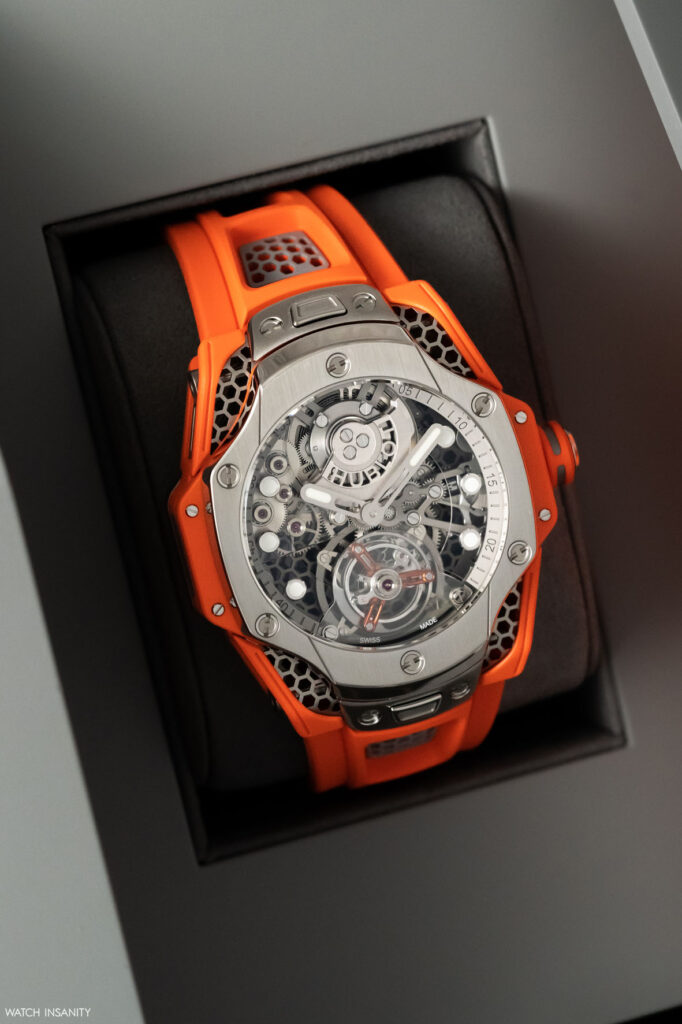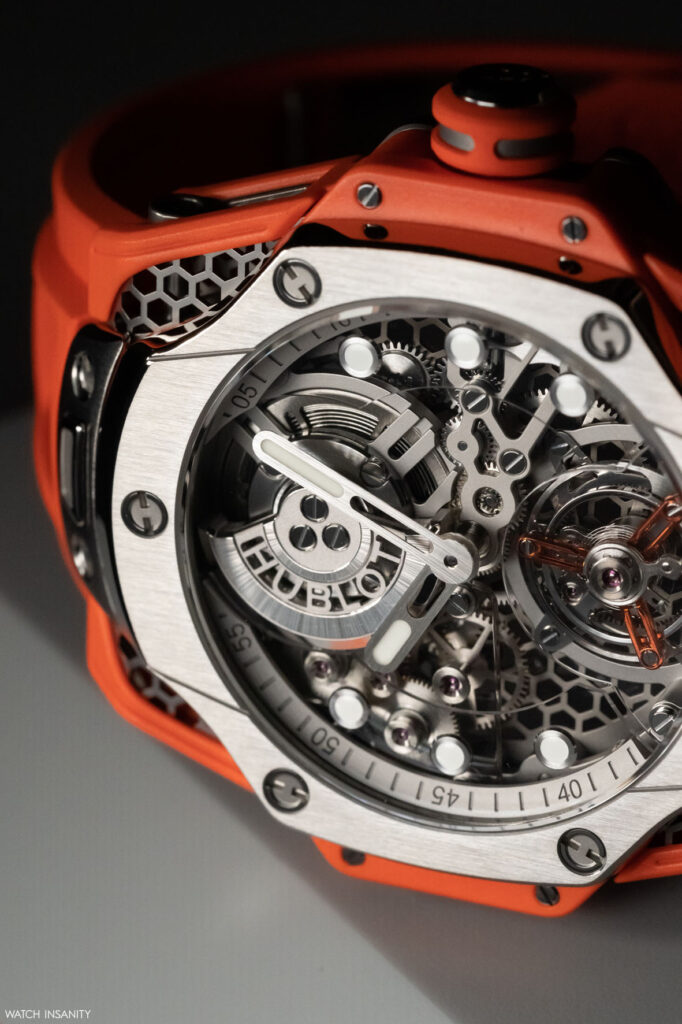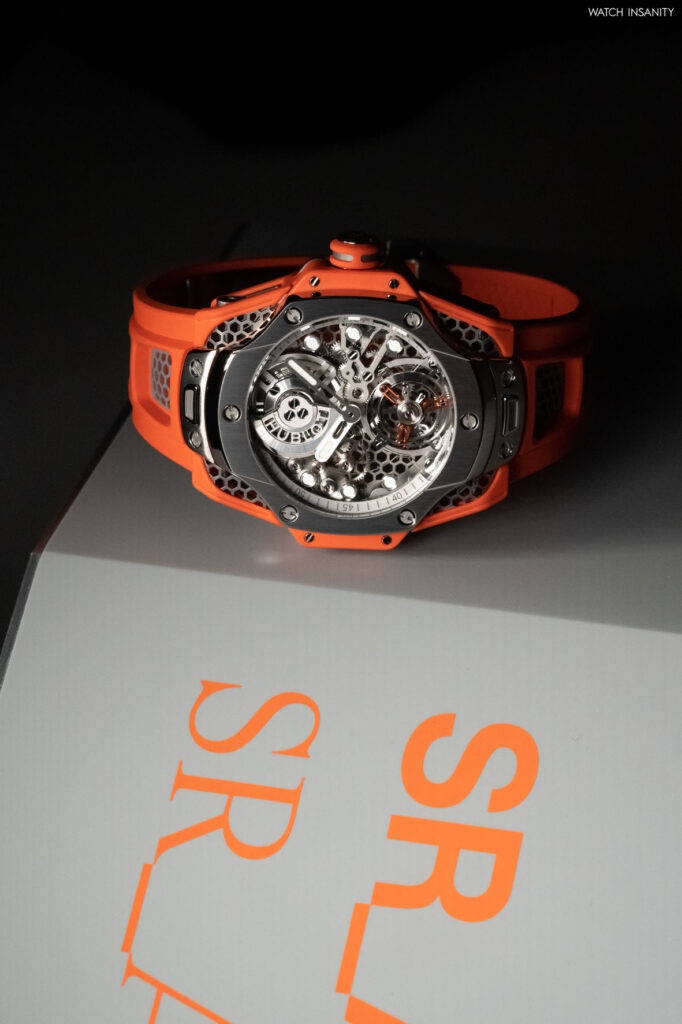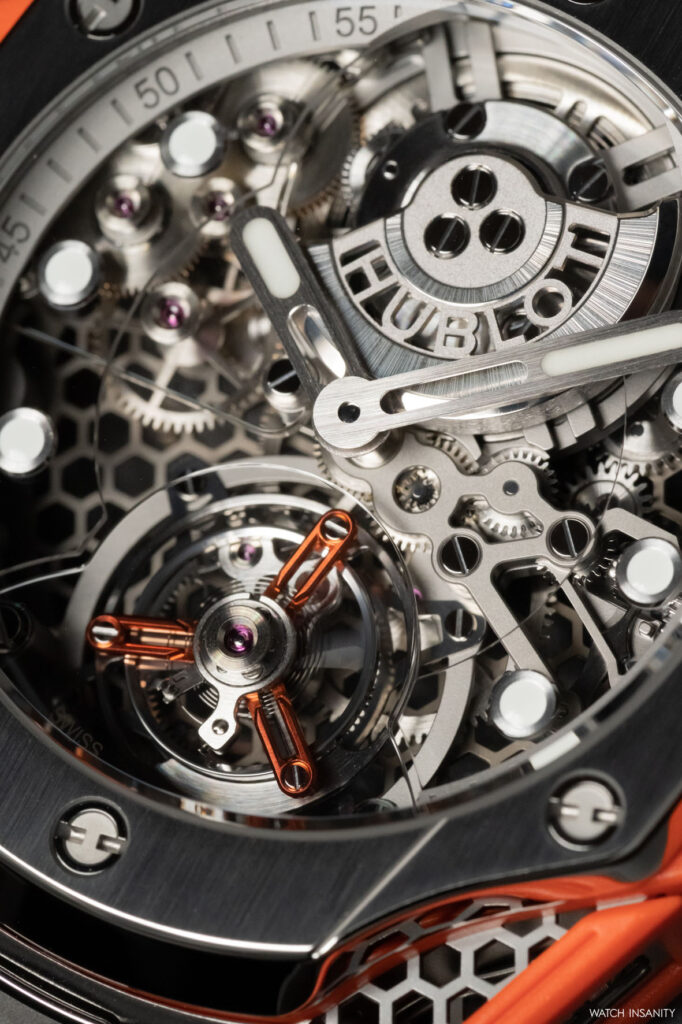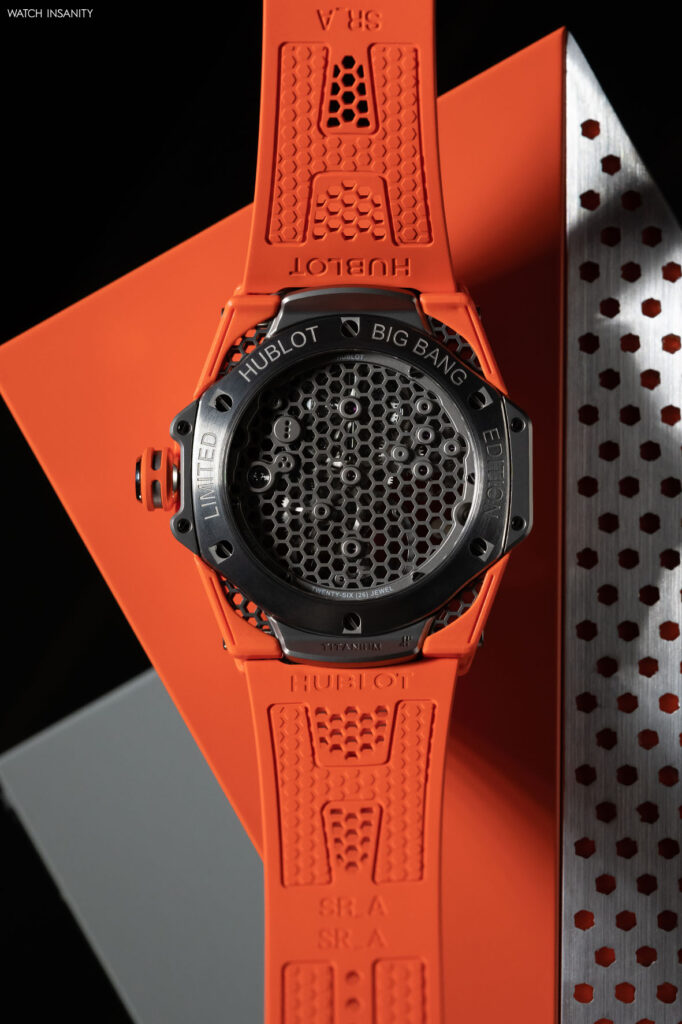Hublot Big Bang Tourbillon Samuel Ross: The Power Of Lightness
13 December 2022To define the relationship that connects Hublot and world-renowned artist and designer Samuel Ross, its brand ambassador, we could refer to none other than Goethe and speak of “elective affinities.” Because the first watch designed by the British artist for Hublot, the Big Bang Tourbillon Samuel Ross, was born from a collaboration coming from a shared feeling for art, design and mechanics.
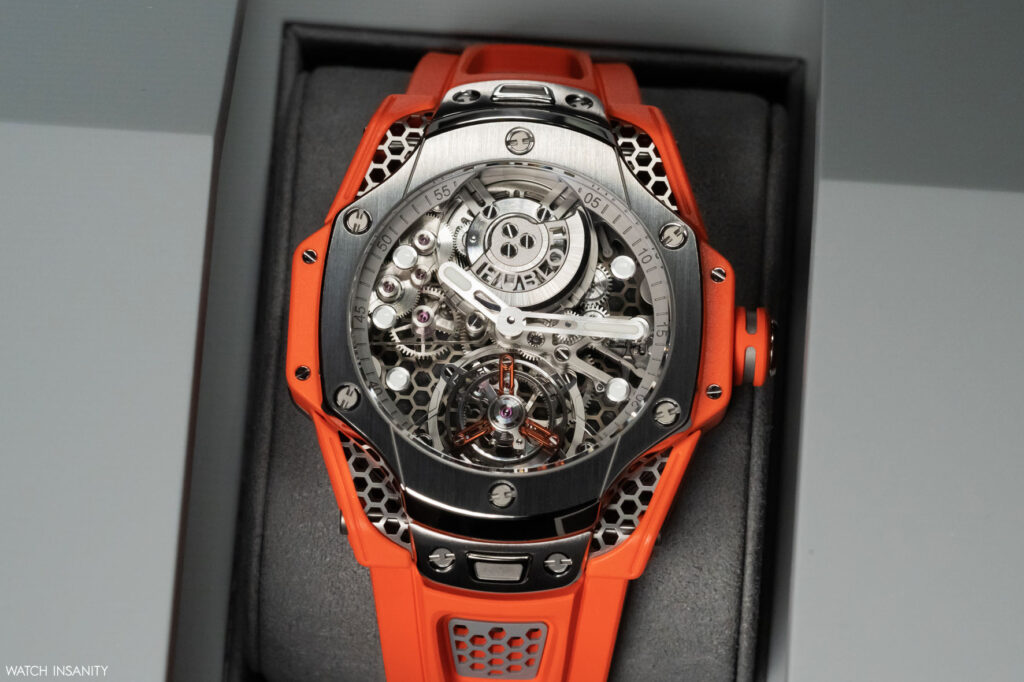
A feeling that led to the encounter between the brand from Nyon and the artist from London in 2019, when Ross was awarded the prestigious Hublot Design Prize, confered every year by the brand to the most talented designers and visual artists who stand out in the art world market. A year later, Ross was named ambassador and then he presented REFORM, a sculpture representing 40 years of Hublot and its “Art of Fusion.” The work combined an ancient and natural material, granite, with a modern and artificial one, steel.
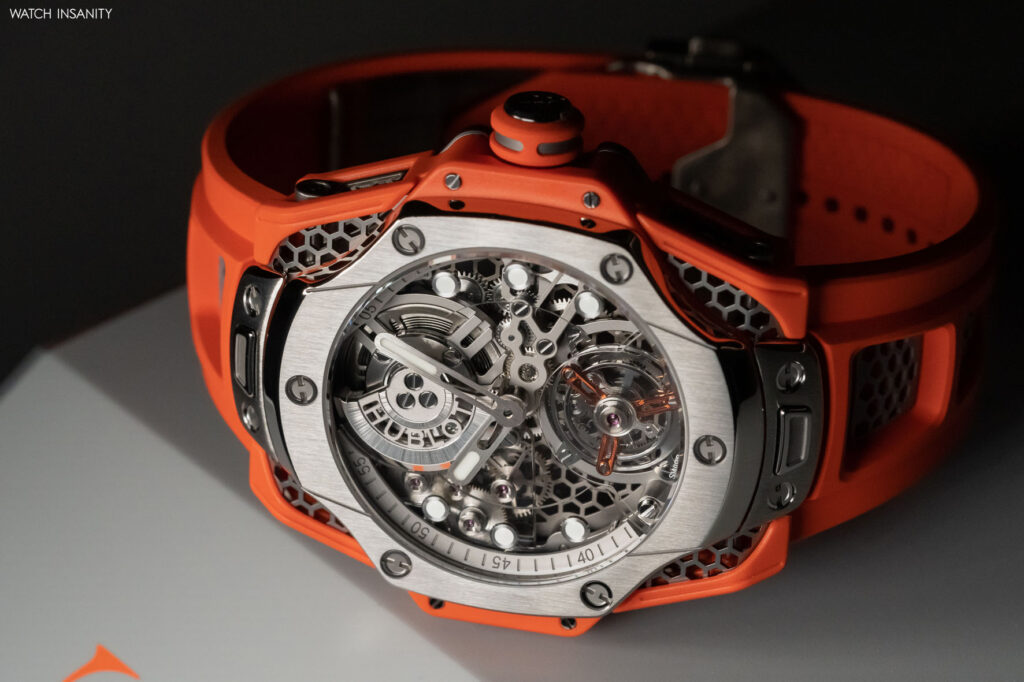
A work that is the natural consequence of the “Hublot Loves Art” initiative, launched by the brand over ten years ago. Since then, Hublot has collaborated with some of the most brilliant artists and designers of an entire generation. Each of them has contributed to the creation of innovative watches, highly coveted by collectors. The last of these artists to have taken up the “Hublot Loves Art” baton is Samuel Ross.
THE HEXAGON AS THE BIG BANG SIGNATURE
His aesthetic codes could only merge, sooner or later, into a Hublot collection. It happened quickly, and it happened with the brand’s most emblematic line, the Big Bang collection. The Big Bang Tourbillon Samuel Ross fully reflects the English artist’s vision of design, applied to the stylistic features of Hublot. Starting from a symbol: the hexagon.
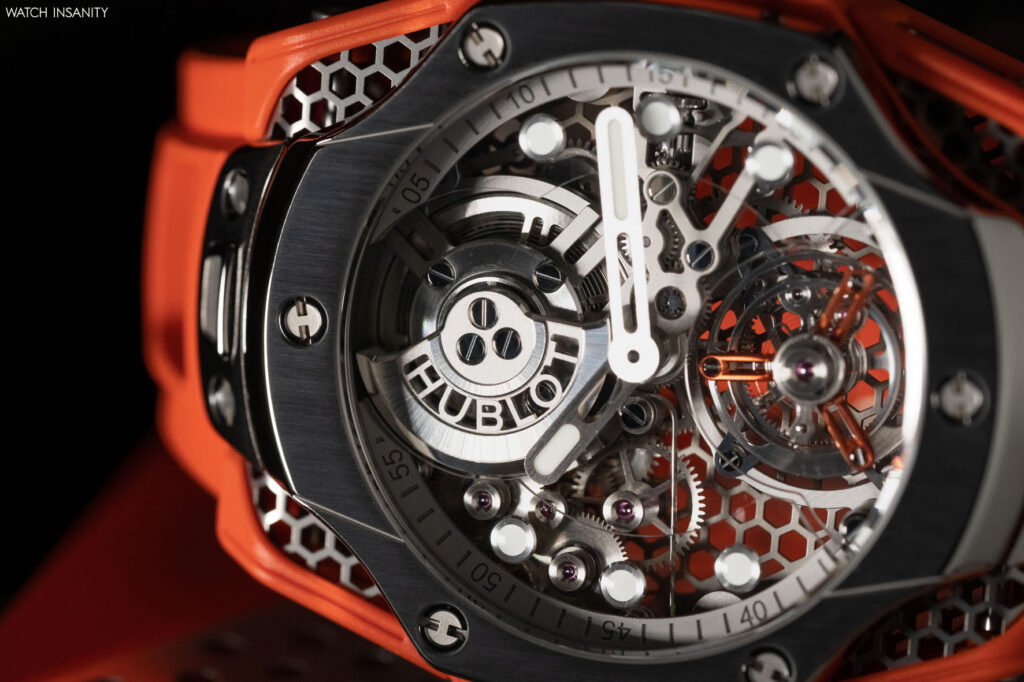
This regular polygon is the archetype of the shape from which the Big Bang case was born, and which Samuel Ross multiplies infinitely on the watch, in an almost hypnotic way. Starting precisely from the case shape, the hexagon seems to almost explode, replicate itself and settle throughout the timepiece: from the dial to the case back, from the case to the strap. Thanks to a titanium honeycomb mesh whose visual trace is all-encompassing and eye-catching, inspiring two simultaneous sensations.
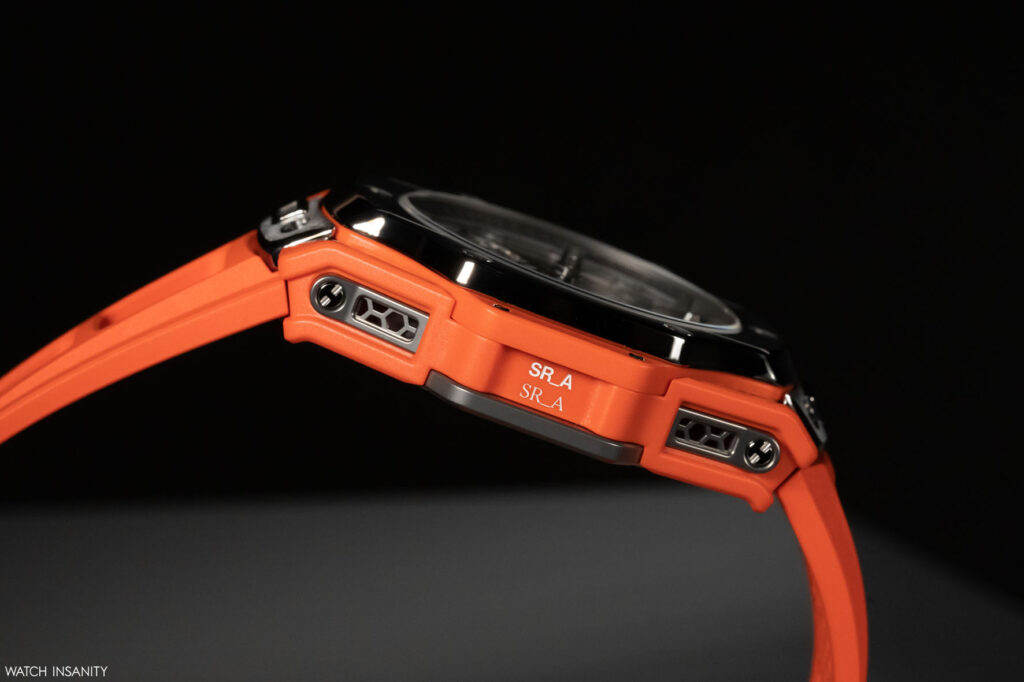
The first is that of an incredible stylistic coherence, of a DNA that is a unique and unmistakable trace of the Big Bang Tourbillon Samuel Ross. The second is that of an extreme lightness conveyed by the honeycomb weave, which almost looks like lace, and by the use of titanium. After all, in an interview with a Singaporean newspaper, the artist said that the aspect of the watch design he prefers is “its lack of weight.”
HUBLOT’S TITANIUM MASTERY
Titanium has often a deep gray tone, which gives a watch a “cold” look. In the Big Bang Tourbillon Samuel Ross, on the other hand, the monochromatic effect is drastically toned down by the various finishes applied to a true titanium exoskeleton.
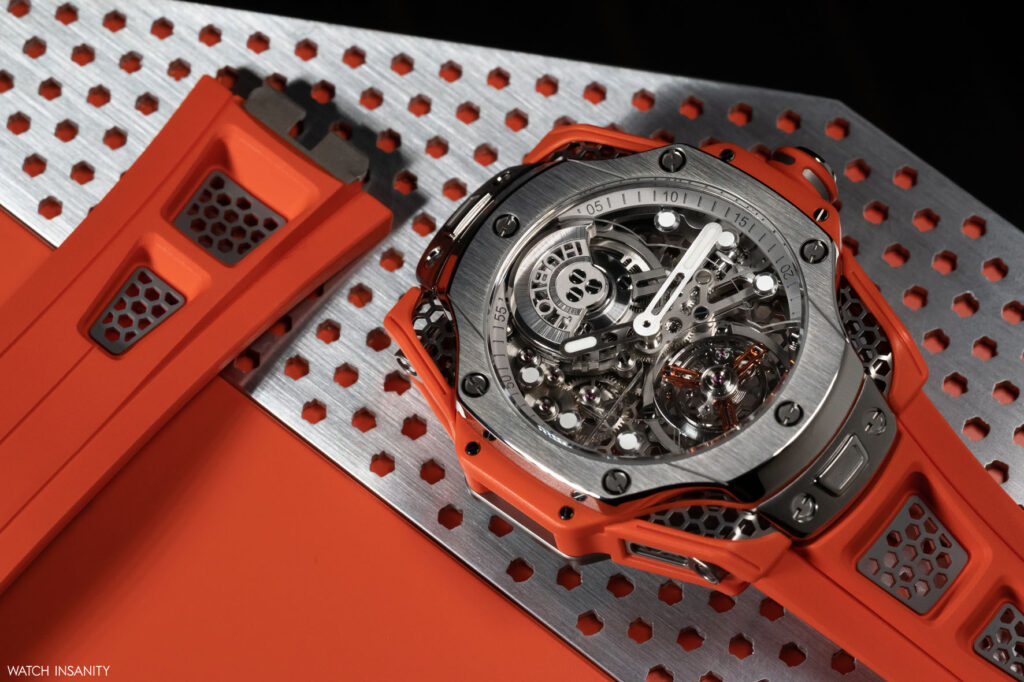
Linear satin brushing and highly polished surfaces are found on the bezel, case back and buckle, while a matte sandblasted finish is featured on the openworked honeycomb patterned frame. The case, 44 mm in diameter and 13.75 thick, is waterproof up to 3 bar and is in brushed and polished titanium.
The vibrant orange of the rubber strap, tourbillon bridge and crown balances the gray of the titanium, making this piece stand out among the many colorful watches in Hublot’s catalog. Ross chose orange, because in the color theory it represents energy and optimism.
A VERTICAL CHALLENGE
The overall shape of the watch is – intentionally – quite long, because Ross considers it to be a wearable sculpture. The artist reflects on the Big Bang Tourbillon Samuel Ross’ shape, compared to that of other sports pieces from Hublot whose “typical watch has a slightly more balanced, stable and rectangular shape, while this one has a much more vertical nature,” he says.
And here the “lug-to-lug” length – which many enthusiasts often refer to when talking about wearability – comes into play. The Samuel Ross Big Bang Tourbillon is quite long, but it seems without lugs: the point where the strap meets the case makes the watch seem very long but, instead, it softly wraps around the wrist almost like a bracelet. Ross didn’t forget to make the watch resistant and ergonomic, even though it was not designed to be small…
THE BIG BANG TOURBILLON SAMUEL ROSS’ CALIBER
The London designer’s work is even more incredible because he had to build the entire watch around an existing movement not specifically created for the Big Bang Tourbillon Samuel Ross. This is the tried and tested in-house automatic caliber HUB6035, housed in watches such as the Big Bang Integral Tourbillon Full Sapphire or the Big Bang Tourbillon Automatic Carbon.
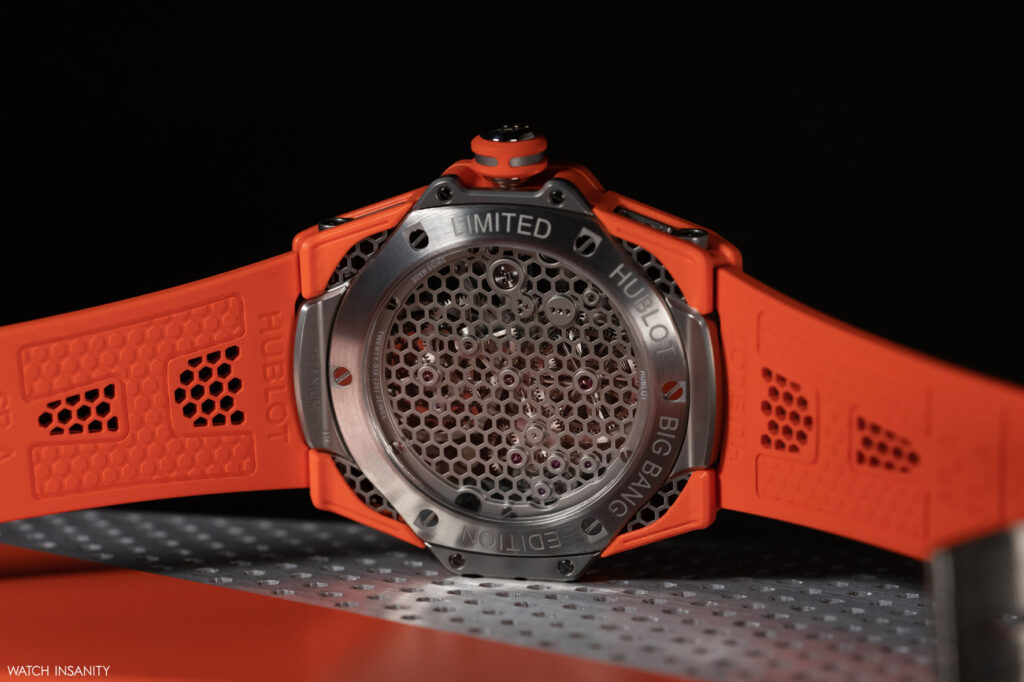
Perfectly illustrating Hublot’s watchmaking savoir-faire, this movement designed and produced inside the Manufacture is distinguished by its automatic winding system with ball bearings, which offers a convenient 3-day power reserve.
The design of the caliber is equally innovative and features a micro-rotor on the dial side, as well as three sapphire bridges. The unique and highly technical layout emphasizes the spectacular aesthetics of the tourbillon and its contemporary design.
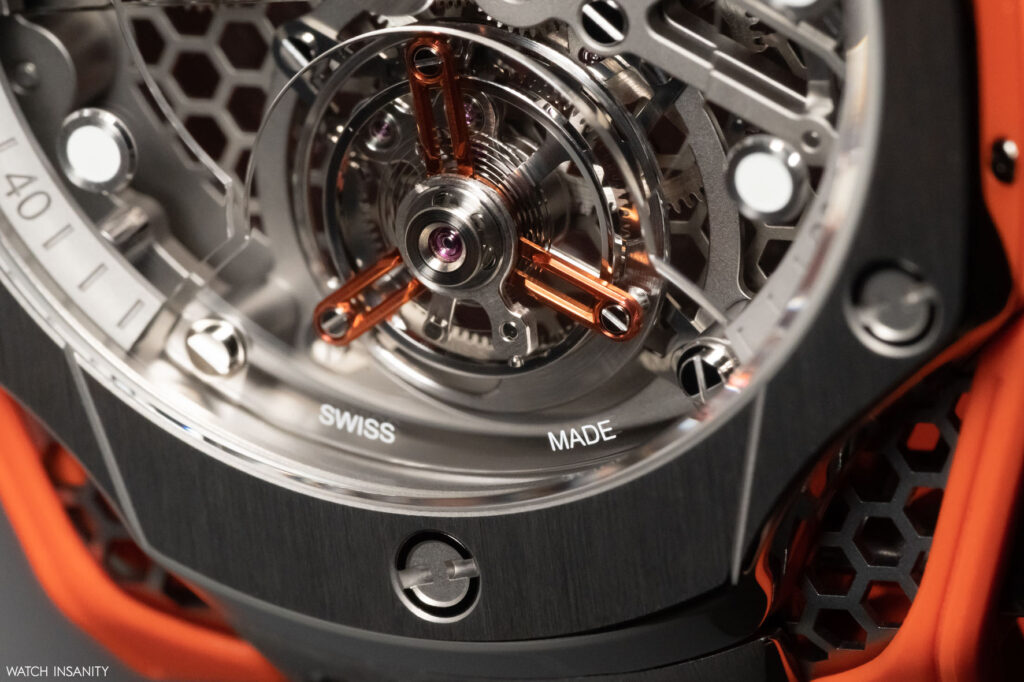
Luckily, Samuel Ross and Hublot do have one point in which they differ. The first is an artist, therefore used to working on unique pieces and not on mass-produced creations; the brand is a company, whose primary mission is to sell watches. Thus, the Big Bang Tourbillon Samuel Ross is not a unique piece but a limited edition of 50, each with a price of 115,000 euros. Excellence is for a few, and fortunately not for one person only. A matter of elective affinities.
By Davide Passoni

